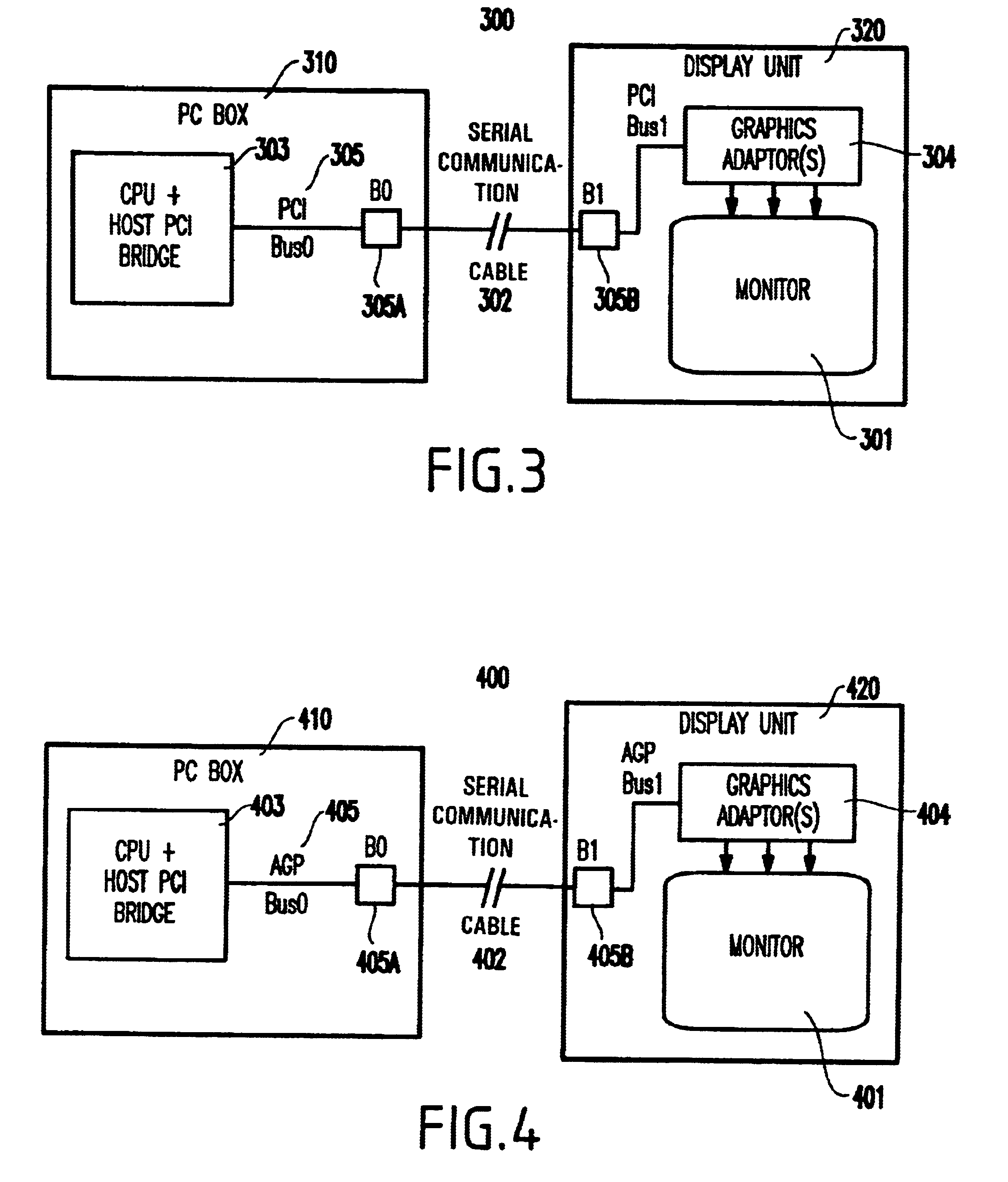Method and system for high resolution display connect through extended bridge
a high-resolution display and extended bridge technology, applied in the field of high-resolution display systems, can solve the problems of too fast for the graphics adaptor, waste of resources, and inability to handle efficiently, so as to achieve efficient and easy connection to the display, avoid bottlenecks, and achieve high resolution.
- Summary
- Abstract
- Description
- Claims
- Application Information
AI Technical Summary
Benefits of technology
Problems solved by technology
Method used
Image
Examples
first preferred embodiment
[0030]To attack the above problems of the conventional architectures, the inventive solution extends the PCI bus by using an extended PCI-PCI bridge and colocates the graphics adaptor(s) with the display itself rather than inside the PC Box 310.
[0031]That is, as shown in FIG. 3, a system 300 according to the invention includes a PC Box 310 coupled to a display unit 320 via a cable 302. As shown in FIG. 3, the invention has moved the graphics adaptor 304 as shown to be a part of the display unit 320 and localized to the monitor 301.
[0032]The invention utilizes an extended bus bridge 305. In FIG. 3, the bus bridge is shown preferably as a PCI bus bridge 305 having a bus portion 305A on the CPU side and a bus portion 305B on the monitor side. The invention is not limited to the PCI bus bridge and indeed other bus bridges may be employed. For example, as discussed in further detail below, in the second embodiment of the invention, an Accelerated Graphics Port (AGP) bus bridge (e.g., hav...
second preferred embodiment
[0041]As mentioned above, the invention is not limited to the PCI bus bridge and indeed other bus bridges may be employed.
[0042]For example, as shown in FIG. 4, in the second embodiment of the invention, an Accelerated Graphics Port (AGP) bus bridge may be provided instead of the PCI bus bridge. Instead of B0 in FIG. 3, in FIG. 4 a first portion of the AGP bus bridge can be provided on the PC side. Similarly, a second portion of the AGP bus bridge can be provided on the display unit side.
[0043]Thus, with the unique and unobvious aspects of the present invention, the invention provides an extended PCI-PCI Bridge or an extended AGP bridge for connecting the computer to the display subsystem.
[0044]Moreover, the invention takes the graphics adaptor away from the system PC box and instead places the graphics adaptor with the monitor. Thus, the graphics adaptor is localized with the monitor, thereby avoiding the bottleneck caused by the cable having to carry all of the bandwidth of the hi...
PUM
 Login to View More
Login to View More Abstract
Description
Claims
Application Information
 Login to View More
Login to View More - R&D
- Intellectual Property
- Life Sciences
- Materials
- Tech Scout
- Unparalleled Data Quality
- Higher Quality Content
- 60% Fewer Hallucinations
Browse by: Latest US Patents, China's latest patents, Technical Efficacy Thesaurus, Application Domain, Technology Topic, Popular Technical Reports.
© 2025 PatSnap. All rights reserved.Legal|Privacy policy|Modern Slavery Act Transparency Statement|Sitemap|About US| Contact US: help@patsnap.com



